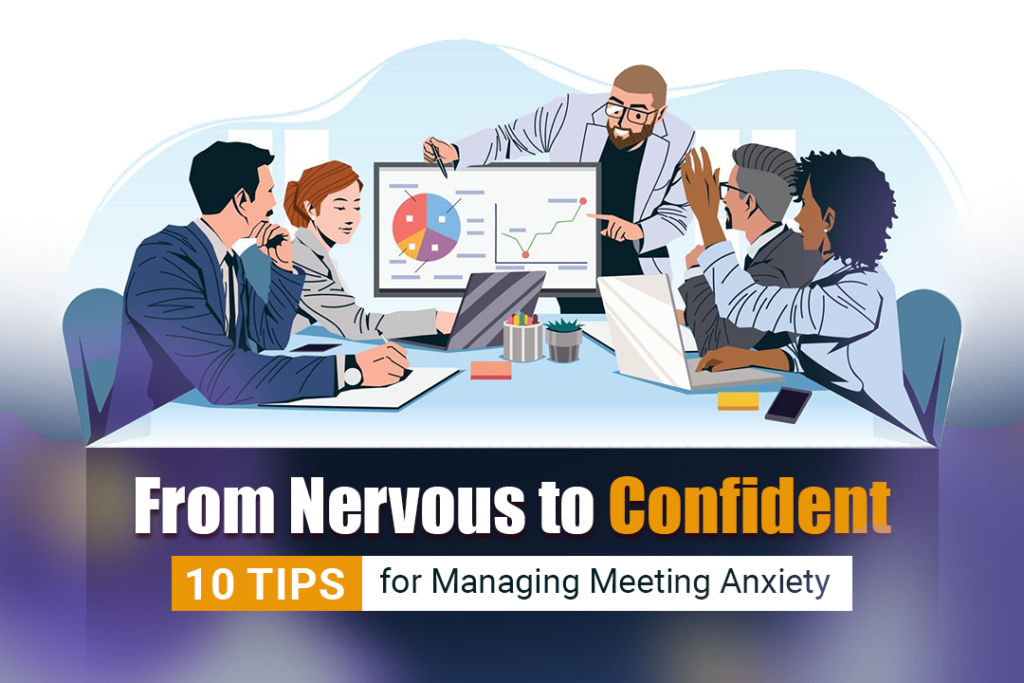
In the fast-paced business world, meetings are inevitable in professional life. Whether it’s a crucial presentation to the company’s executives or a routine team gathering, the mere thought of facing a room full of attentive eyes can send shivers down the spine of even the most seasoned professionals.
Meeting anxiety, a common affliction that affects countless individuals, can be a formidable barrier to success. However, fear not, for in this article, we unveil a treasure trove of invaluable tips to transform nervousness into confidence.
Embrace these ten expert strategies for managing meeting anxiety, and you’ll soon find yourself standing tall, ready to conquer any meeting room with poise and assurance. Let’s embark on this journey from nervous to confident as we unveil the secrets to thriving amid those nerve-wracking meetings.
10 Effective Tips For Managing Meeting Anxiety
Here are ten practical tips for managing meeting anxiety.
1. Start by Understanding Meeting Anxiety
Understanding meeting anxiety is a powerful and effective tip for managing this common affliction. Meeting anxiety can manifest in various ways, such as a racing heartbeat, sweaty palms, or a sense of dread before and during meetings. Understanding the causes of your anxiety can help you gain valuable insights into your triggers and thought patterns.
One of the primary reasons for meeting anxiety is the fear of judgment or criticism from others. People often worry about being perceived as incompetent or making mistakes in front of their colleagues or superiors. Recognizing that these fears are usual and everyone experiences some nervousness before meetings can be reassuring.

Pic Courtesy: Freepik
Another aspect to understand is that not all anxiety is detrimental; a certain stress level can be beneficial as it keeps you alert and focused. The key is to manage anxiety so that it doesn’t overwhelm you and impede your ability to perform well in meetings.
When you take the time to understand your specific anxiety triggers and thought patterns, you can develop strategies to cope with them effectively.
Some of these strategies include
- Deep breathing exercises, positive affirmations, or visualizations to calm nerves before a meeting.
- Seeking support from colleagues or mentors can also be helpful. Others who have experienced meeting anxiety may have valuable advice to share. Always remember that vulnerability is a strength, not a weakness, and reaching out for support can foster a sense of camaraderie and understanding.
2. Always Remember Preparation Is Key
“Always remember, preparation is key” is a timeless and invaluable tip for conquering meeting anxiety with confidence. While facing a meeting room full of attentive eyes might trigger nervousness, arming yourself with thorough preparation is like donning a suit of armor that shields you from self-doubt and uncertainty.

Here are some of the strategies you can use:
- First and foremost, it is crucial to understand the meeting’s purpose and agenda. Clarify the objectives, topics for discussion, and your role in the proceedings. With a clear sense of direction, you can channel your focus and energy toward meaningful contributions.
- Next, gather all necessary information and materials well in advance. Research the topics at hand, familiarize yourself with relevant data, and anticipate potential questions that might arise. This level of preparation boosts your confidence and showcases your dedication and professionalism.
- Rehearsing your points and ideas can work wonders in alleviating anxiety as you prepare. Practice delivering your key messages in front of a mirror or with a trusted colleague, and note areas where you can refine your communication.
- Furthermore, visualizing a successful meeting can be a powerful mental tool. Picture yourself engaging with poise, articulating your thoughts with clarity, and receiving positive responses from your audience. This positive visualization primes your mind for success and reduces anxiety-induced self-doubt.
- Another crucial aspect of preparation is anticipating challenges or potential obstacles during the meeting. Considering different scenarios and preparing contingency plans can help you feel more in control and adaptable, even in unexpected challenges.
- Lastly, consider the significance of physical preparation. Ensure you have all necessary materials organized and accessible, dress appropriately for the occasion, and arrive at the meeting location with ample time to spare. Being punctual and well-prepared further boosts your confidence and leaves a lasting impression of professionalism.
3. Familiarize Yourself with the Agenda
Familiarizing yourself with the agenda is an essential tip for combating meeting anxiety. Knowing what to expect and clearly understanding what to discuss during the meeting can significantly reduce feelings of uncertainty and nervousness.
Not knowing what the meeting is about or what you will likely discuss can increase anxiety. It’s natural to feel uneasy when you need clarification about the purpose of the meeting or your role in it. However, by reviewing the agenda beforehand, you can garner a sense of direction and purpose, which can help calm your nerves.
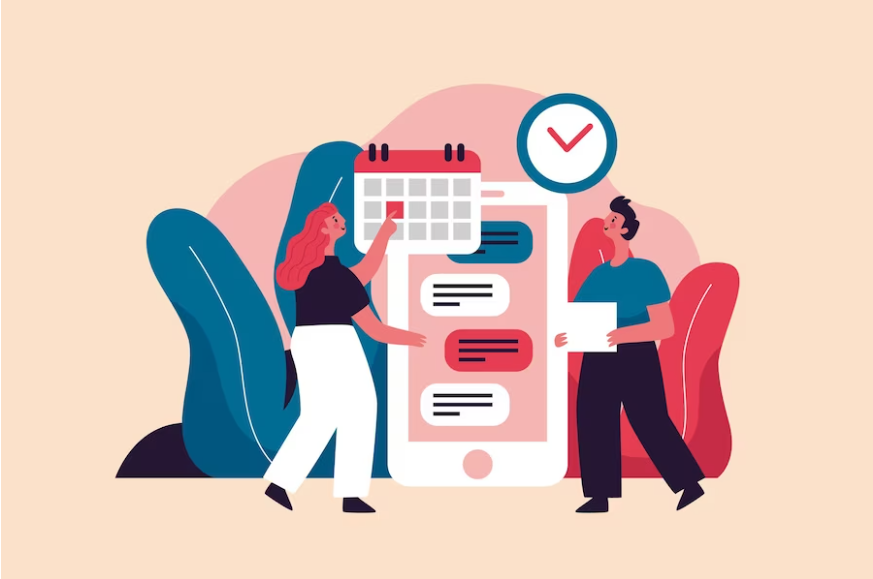
Familiarizing yourself with the agenda allows you to prepare appropriately. If you need to contribute to specific topics or points, you can gather relevant information, data, or ideas in advance. Being prepared can boost your confidence and make you feel more in control during the meeting.
Knowing the meeting’s structure and schedule allows you to manage your time effectively. It can help you allocate more time to meaningful discussions and ensure you feel relaxed during the meeting.
When you review the agenda, you might spot items that raise concerns or questions. Doing this allows you to seek clarification from the organizer or other participants before the meeting starts, addressing potential anxieties proactively.
Here are some practical steps to familiarize yourself with the agenda:
- If you still need to receive the meeting agenda, feel free to reach out to the organizer and ask for it. Most organizers will be more than willing to share the schedule beforehand.
- Once you have the agenda, take the time to read it carefully. Understand the topics to discuss, any possible goals or decisions to make, and the order in which you will address them.
- As you read through the agenda, jot down any questions, comments, or ideas that come to mind. Prepare relevant information or data for reference during the meeting.
- Imagine yourself participating in the meeting confidently. Visualizing your positive contributions can help you feel more at ease and mentally prepared.
- If there’s anything in the agenda you need help understanding, feel free to ask the organizer for clarification. This proactive approach can alleviate anxieties arising from uncertainty.
- If you still feel anxious before the meeting, practice deep breathing or mindfulness exercises to calm your nerves and focus your mind.
4. Practice Active Listening
Active listening helps you stay focused and engaged and reduces the pressure to speak or contribute constantly. Active listening involves being fully present and attentive to what others are saying, which can significantly ease anxiety during a meeting.
When you actively listen, you can concentrate on understanding others’ perspectives and ideas. Doing this reduces the pressure to constantly speak or provide input, which can be a source of anxiety, especially if you feel unprepared or unsure of what to say.
Actively listening can help better grasp the content of the discussion. This understanding can lead to more meaningful contributions when you participate, making you feel more confident in your input.
Listening intently and seeking clarification when necessary helps avoid misunderstandings. Anxiety can sometimes aggravate due to the fear of misinterpreting information or missing critical points, but active listening can alleviate these concerns.
Lastly, active listening demonstrates respect and empathy for others’ ideas and opinions. It fosters positive relationships with colleagues and can create a more supportive and less intimidating meeting environment.
Some of the strategies to practice active listening include:
- Make an effort to maintain appropriate eye contact with the speaker. Doing this shows that you are attentive and interested in what they say.
- Minimize distractions during the meeting, such as checking your phone or working on other tasks. Focus solely on the discussion.
- Pay attention to the presentation’s main ideas and key points. Take mental or written notes to help you remember important information.
- If you’re unsure about something or need more context, don’t hesitate to ask for clarification. It shows that you’re actively engaged in the conversation.
- After a speaker shares their thoughts, paraphrase or summarize what they said in your own words. Doing this demonstrates active listening and helps reinforce your understanding of the topic.
- Allow the speaker to finish their thoughts before responding or providing your input. Interrupting can be disruptive and may lead to misunderstandings.
- Try to put yourself in the speaker’s shoes and understand their perspective. Recognize that everyone’s contributions are valuable, which can help create a supportive atmosphere.
- Suppose you tend to be self-critical during meetings; practice being more accepting of your thoughts and ideas. Remember that it’s okay to take your time to contribute when you have something valuable to share.
5. Engage in Constructive Participation
Engaging in constructive participation shifts the focus from self-doubt to active involvement during the meeting. When you actively participate positively and meaningfully, it boosts confidence, reduces anxiety, and contributes to a more productive meeting environment.
Actively contributing to the meeting also demonstrates your knowledge, expertise, and willingness to be part of the team. It can boost your confidence and self-assurance during the meeting.

Participating constructively makes you feel more invested in the meeting’s outcomes. This sense of ownership can help reduce anxiety as you actively contribute to decision-making.
Constructive participation enhances your interactions with colleagues, supervisors, or clients. Sharing valuable insights can help you build stronger relationships within the team and create a more inclusive atmosphere.
Furthermore, actively participating in discussions keeps you engaged and focused on the meeting’s objectives. It prevents your mind from wandering to anxious thoughts and helps you stay present.
Strategies for engaging in constructive participation:
- Review the meeting agenda and any relevant materials beforehand. Being prepared allows you to contribute more confidently and with relevant insights.
- Feel free to ask questions if you need more information or clarification on a topic. Doing this shows your interest and engagement in the discussion.
- If you have specific knowledge or experience relevant to the meeting’s topics, share it with the group. Your insights can add value to the discussion and help others see your expertise.
- Actively listening to others’ contributions can inspire thoughtful responses. It also prevents repeating points already discussed, making your participation more relevant.
- If appropriate, provide constructive feedback or suggestions during the meeting. Focus on offering solutions rather than just pointing out problems.
- If you have a different perspective, express it respectfully. Diverse viewpoints can lead to better decision-making, and respectful disagreements are a natural part of productive discussions.
- Engage in open and positive body language to convey your interest and enthusiasm. Maintain eye contact and a nod to show agreement or understanding, and avoid crossing your arms, which can appear defensive.
- Be concise in your contributions to avoid rambling or feeling overwhelmed by speaking for too long. Clear, straightforward points are often more impactful.
- Acknowledge and appreciate others’ contributions and successes. Creating a positive and supportive atmosphere encourages further engagement and participation.
6. Manage Physical Manifestations of Anxiety
Managing physical manifestations of anxiety is an essential tip for combating meeting anxiety as it helps you regulate your body’s response to stress, promoting a calmer and more focused state of mind. Anxiety often triggers physical symptoms, such as increased heart rate, sweating, trembling, or muscle tension, which can be distracting and uncomfortable during a meeting. Addressing these manifestations can improve your overall meeting experience and make you feel more in control.

Here are some strategies to manage physical manifestations of anxiety:
- Deep breathing is an effective way to lessen anxiety symptoms. When you feel anxious, take slow, deep breaths, focusing on inhaling and exhaling deeply. It activates the body’s relaxation response and helps calm your nervous system.
- Progressive Muscle Relaxation (PMR) involves tensing and relaxing different muscle groups to release physical tension. If you notice stress building up in your body during a meeting, try to relax your muscles consciously. Start with your toes and work your way up through your body, tensing each muscle group for a few seconds before letting go of the tension.
- Regular mindfulness and meditation can help you become more aware of your body’s responses to stress. Mindfulness involves staying present at the moment without judgment. Short mindfulness exercises before or during the meeting can help reduce anxiety symptoms.
- Monitor your internal dialogue and challenge negative thoughts that contribute to anxiety. Replace self-doubt with positive affirmations and remind yourself that you are capable and prepared for the meeting.
- Engaging in daily physical activity outside of the meeting context can help reduce overall anxiety levels. Exercise is a stress reliever and can positively impact your mood and energy levels.
- Limit or avoid caffeine and other stimulants, which can exacerbate anxiety symptoms. Opt for water or herbal tea instead to stay hydrated without increasing feelings of nervousness.
- Feeling well-prepared for the meeting can reduce anticipatory anxiety. Practice your contributions or presentations beforehand to build confidence in what you’ll discuss.
- Imagine yourself participating in the meeting confidently and successfully. Visualization can help reduce anxiety and improve performance.
- Schedule short breaks during longer meetings. Use this time to stretch, take a walk, or practice relaxation techniques.
- If you find that anxiety significantly impacts your ability to function during meetings or other areas of life, consider seeking support from a therapist or counselor who can help you develop coping strategies.
Remember that managing physical manifestations of anxiety is an ongoing process, and it’s okay to practice these techniques regularly to build resilience over time. Paying attention to your physical and emotional well-being will help you face meetings with a greater sense of calm and focus, making them more productive and enjoyable experiences.
7. Visualize Success
Visualizing success is a powerful tip for combating meeting anxiety, as it harnesses the power of your mind to create a positive and confident mindset. When you imagine yourself performing well in a meeting, you can reduce anxiety and improve your overall performance by boosting self-assurance and motivation.
Athletes, performers, and professionals commonly use visualization techniques to enhance their abilities, and they can be equally effective in preparing for successful meetings.
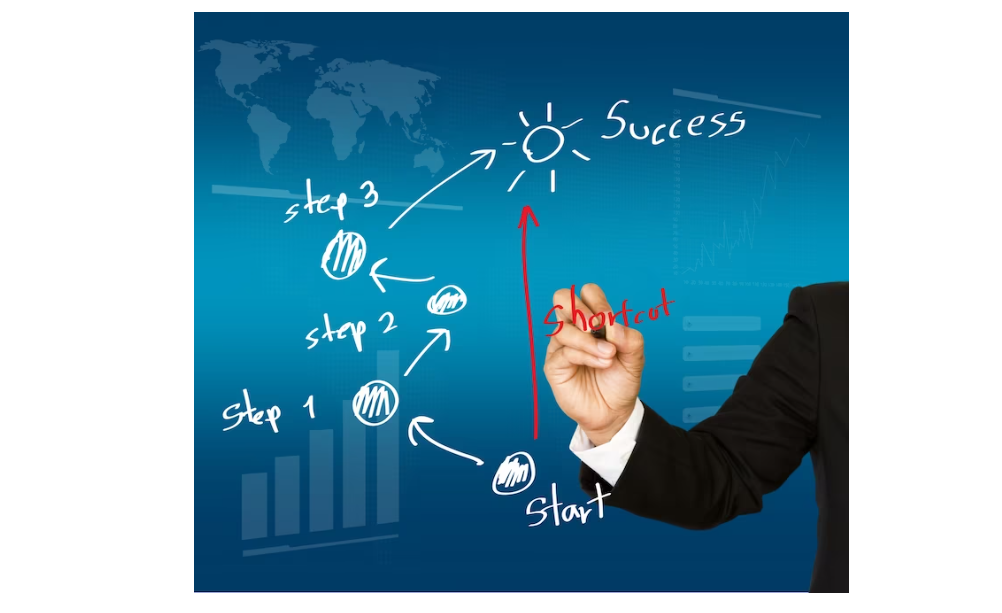
Pic Courtesy: Freepik
Here’s how to use visualization to combat meeting anxiety:
- Find a quiet and comfortable space where you can focus without distractions. Dedicate a few minutes each day leading up to the meeting to practice visualization.
- Take a few deep breaths to relax your body and calm your mind. Deep breathing helps reduce stress and sets the stage for effective visualization.
- Close your eyes and vividly imagine yourself in the meeting room. Picture the surroundings, the people present, and yourself feeling calm, composed, and confident.
- Imagine the meeting progressing smoothly. Envision yourself actively participating, expressing your ideas clearly, and contributing valuable insights. See yourself receiving positive responses from others.
- As you visualize success, please pay attention to its positive emotions. Feel the sense of accomplishment, satisfaction, and pride of a successful meeting.
- Engage all your senses in the visualization process. Imagine the sounds of discussion, the scent of the room, and the physical sensations of being present and confident.
- Anticipate potential challenges during the meeting and visualize yourself handling them with poise and resilience. Imagine yourself staying calm and finding practical solutions.
- Accompany your visualization with positive affirmations related to the meeting. Repeat statements like “I am well-prepared and capable,” “I communicate my ideas with confidence,” or “I am valuable to the team.”
- The more you practice visualization, the more effective it becomes. Make it a habit to regularly visualize successful meetings, especially before important ones.
- Trust that your visualization practice is positively impacting your mindset and performance. Believe in your ability to confidently handle the meeting.
Visualization helps rewire your brain to focus on positive outcomes rather than dwelling on anxieties and fears. It can create a self-fulfilling prophecy, where your positive expectations lead to improved performance and a more enjoyable meeting experience.
It’s important to note that visualization is just one aspect of combating meeting anxiety. Combining it with other techniques like preparation, active listening, and managing physical manifestations of anxiety can further enhance your ability to overcome stress and thrive in meetings.
8. Seek Support and Feedback
Seeking support and feedback is a valuable tip for combating meeting anxiety as it provides you with external perspectives, guidance, and reassurance. Feeling nervous or uncertain about your performance in meetings is normal, and seeking support can help you gain confidence and improve your skills over time.
Sharing your anxieties with others can make you feel validated, knowing that many people experience similar concerns. This validation can reduce feelings of isolation and helplessness.
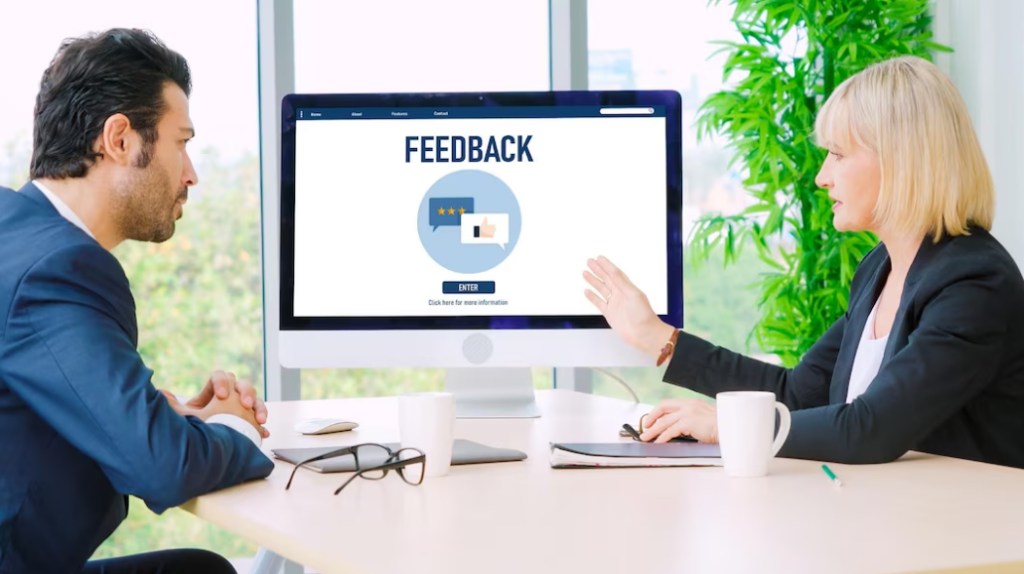
Pic Courtesy: Freepik
Seeking support allows you to gain fresh perspectives on your anxieties or concerns. Colleagues or mentors may offer valuable insights, strategies, or experiences that can help you navigate meeting challenges.
Feedback from others can provide specific tips and advice to enhance your meeting skills. Learning from experienced individuals can be instrumental in your growth and development. Positive feedback and encouragement can significantly boost your confidence and belief in your abilities. Receiving affirmations about your strengths helps counter self-doubt.
Here are some strategies for seeking support and feedback:
- Reach out to someone you trust and respect, such as a mentor or a more experienced colleague, and share your meeting anxieties with them. They can guide based on their own experiences and encouragement.
- After participating in a meeting, ask for feedback from colleagues or the meeting organizer. Inquire about areas where you performed well and areas for improvement. Constructive feedback can help you refine your skills.
- If available, consider joining a support group within your organization or industry where individuals share experiences and offer support in dealing with meeting anxieties.
- Practice with a friend or family member: If you have a friend or family member who is willing to help, practice your meeting contributions with them. They can give you feedback and help build your confidence.
- Record your meetings (with permission from participants) and review them later. Doing this can give you valuable insights into your communication style and areas for improvement.
- Look for workshops or training sessions focused on improving meeting skills or public speaking. These can offer expert advice and practice opportunities in a supportive environment.
- Many online platforms offer courses or webinars on public speaking, communication, and meeting skills. Engaging with these resources can provide valuable insights and techniques.
- When you receive feedback, apply the constructive advice to your future meetings. Taking action on feedback reinforces your commitment to growth and improvement.
It’s important to note that seeking support and feedback is not a sign of weakness; it’s a proactive approach to personal and professional development. Embrace the chance to learn and grow from the input of others, and use it as a stepping stone to overcome meeting anxiety and become a more confident and effective participant.
9. Reflect and Learn From Each Meeting
Reflecting on and learning from each meeting is a valuable tip for combating meeting anxiety. It allows you to gain insights, identify areas for improvement, and build on your strengths. Taking a proactive approach to learn from your meeting experiences can help reduce anxiety by gradually enhancing your meeting skills and feeling more in control.
Reflecting on your meeting performance helps you become more aware of your strengths, weaknesses, and behavior patterns. This self-awareness is crucial for personal growth and improvement.
Analyzing your meeting contributions can help you identify areas for improvement in your communication, decision-making, or problem-solving skills.

Reflection also allows you to acknowledge and appreciate your successes during the meeting. Recognizing your achievements boosts confidence and motivation for future engagements.
When you approach each meeting as an opportunity to learn and grow, it reframes the experience from a potential source of anxiety to a chance for personal development.
Here are some strategies for reflecting and learning from each meeting:
- Keep a meeting journal where you jot down your thoughts, feelings, and observations after each meeting. Write about what went well, what could be improved, and any insights gained.
- Before each meeting, set specific goals for yourself. It could be speaking up on a particular topic, actively listening, or contributing a new idea. After the meeting, assess how well you achieved these goals.
- As mentioned earlier, actively seek feedback from colleagues or the meeting organizer after each meeting. Their input can provide valuable perspectives for your reflection.
- Look for recurring patterns in your meeting behaviors. Are there specific situations or topics that trigger more anxiety? Identifying patterns helps you address the root causes of anxiety.
- Be attentive to your contributions during the meeting. This practice of self-awareness helps you stay focused and identify areas for improvement.
- After reflecting on the meeting, apply the lessons learned to your future engagements. Focus on implementing positive changes and experimenting with new strategies.
- If you recognize areas for improvement, remember that growth takes time. Be kind to yourself and acknowledge that learning is a continuous journey.
- Remember to celebrate the positive aspects of each meeting. Recognize your achievements and give yourself credit for your contributions.
Regularly incorporating reflection into your meeting routine helps turn each experience into an opportunity for learning and growth. Over time, as you learn from your experiences and apply your insights, your meeting anxiety will likely diminish, and your confidence and effectiveness as a participant will improve. Embrace each meeting as a chance to develop professionally and personally, and you’ll pave the way for more successful and fulfilling interactions.
10. Practice and Persistence
Practice and persistence are crucial tips for combating meeting anxiety as they involve consistent effort and dedication to improving your meeting skills and managing anxiety. Overcoming meeting anxiety is a gradual process, and practice and persistence play significant roles in building confidence and reducing nervousness.
The more you participate in meetings, the more comfortable and confident you become. Regular practice helps you familiarize yourself with the meeting environment and dynamics, reducing anxiety over time. Preparation allows you to refine your meeting skills, such as listening actively, articulating ideas clearly, and effectively handling questions. As you practice, you become better equipped to handle various meeting scenarios.
Through practice, you can experiment with different communication styles and strategies. It helps you discover what works best for you and increases your adaptability during meetings. Exposing yourself to challenging situations can help you develop mental resilience. Over time, you learn to cope better with meeting anxiety and navigate through stressful moments.

Practice allows you to prepare and rehearse your contributions in a safe environment. The more prepared you are, the more at ease you’ll feel during the meeting.
Meanwhile, persistence helps you bounce back from setbacks and continue your efforts to combat anxiety. Being persistent enables you to reflect on and learn from each meeting experience, even if it didn’t go as well as you hoped. This continuous learning contributes to your personal growth.
With persistence, you can gradually improve in managing anxiety and participating in meetings. Small steps forward add up over time, leading to significant progress. As you persistently work on managing meeting anxiety, you build a stronger belief in your abilities. This self-belief becomes a foundation for facing future challenges with more confidence.
The more persistent you are, the more you can take on challenging meeting roles or projects. Each successful experience reinforces your belief in your capabilities.
Here are a few tips for incorporating practice and persistence:
- Set realistic and achievable goals related to your meeting participation. Break down larger goals into smaller milestones to track your progress.
- Actively seek opportunities to participate in meetings, workshops, or discussions. The more you engage, the more you practice and learn.
- Celebrate your progress and efforts, regardless of the outcome. Recognize that you are taking proactive steps to combat meeting anxiety.
- Change takes time, and managing anxiety is no exception. Be patient with yourself and acknowledge that progress might come in small increments.
- Surround yourself with supportive colleagues, mentors, or friends who can provide encouragement and constructive feedback.
Everyone experiences meeting anxiety to some degree, and it’s okay to feel nervous occasionally. Embrace practice and persistence as tools to gradually build your skills and confidence. With continued effort and a positive mindset, you can combat meeting anxiety and foster a more enjoyable and productive meeting experience for yourself and others.
Key Takeaway:
Transforming from nervousness to confident meeting participation requires dedication, self-awareness, and a willingness to grow. By implementing the ten strategies discussed—familiarizing with the agenda, active listening, constructive engagement, managing physical manifestations of anxiety, visualization, seeking support and feedback, reflecting, and practicing persistence—you can combat meeting anxiety and approach each engagement with assurance and readiness.
Embrace meetings as opportunities to learn, grow, and contribute meaningfully. With patience and perseverance, turn anxiety into a stepping stone for building confidence. So, take a deep breath, remind yourself of these tips, and confidently make your voice heard, shining brightly in any professional setting.
These tips are equally apt for conference- and event-related anxiety. If you work in the event industry and find this article helpful, be sure to explore Eventible for more event-related articles and valuable information.



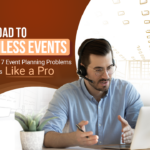

Comments are closed.